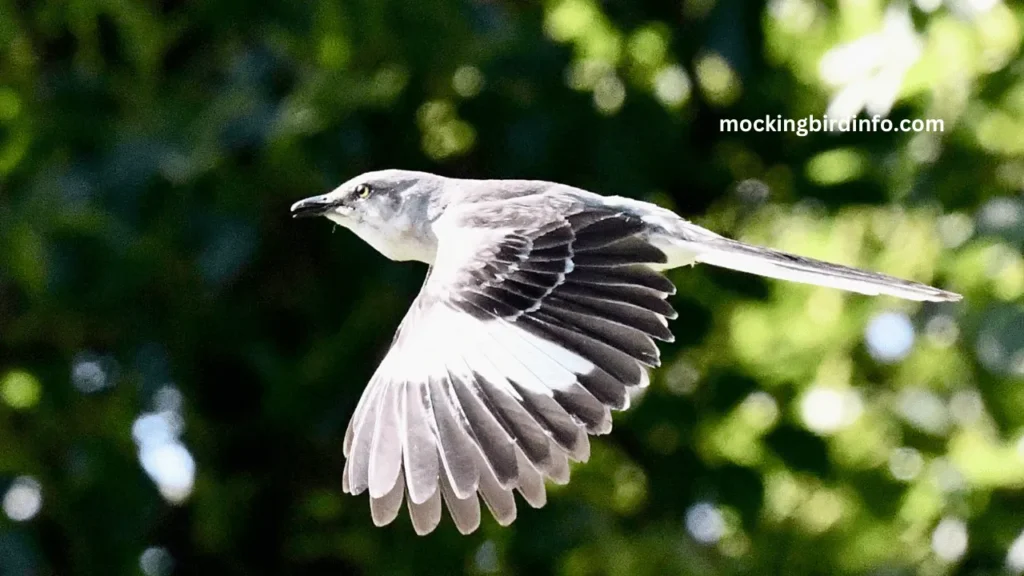Walking through a park or your own garden, it’s easy to be captivated by the melodious songs of a mockingbird. But these same songbirds, admired for their mimicking skills, have another side to them.
For anyone who has been swooped at or chased by a seemingly harmless bird, the question arises: Are mockingbirds aggressive to humans? Understanding why these birds can display aggressive behavior is key to better coexisting with them.
Mockingbirds are generally not known for unprovoked aggression, but when their nests and young are at risk, they transform into fierce defenders. This protective behavior, while surprising to humans, is a survival instinct that has evolved over generations.
Knowing the reasons behind their actions can shed light on how to avoid confrontations and respect their space.This article will explore the triggers for mockingbird aggression, how human activities affect their behavior, and practical ways to live peacefully alongside them.
Learning about these aspects can lead to greater appreciation and more harmonious interactions with these intelligent birds.

Contents
Factors Triggering Aggressive Behavior
Mockingbirds are fiercely territorial birds, especially during the breeding season, which typically spans spring to early summer. During this period, their main focus is on raising their young and protecting their nests. This heightened territorial instinct results in what many people describe as “aggressive” behavior.
When they perceive a threat, they will defend their space using a series of behaviors, from vocal alarms to dive-bombing intruders. Such displays are usually aimed at deterring predators and perceived threats, including humans who unknowingly wander too close to a nest. Their protective nature is an evolutionary response to ensure the survival of their offspring.
Nesting is at the heart of this aggressive behavior. A mockingbird’s nest, often constructed in shrubs, trees, or man-made structures, represents a safe zone for its eggs and chicks. If anything, be it a person or a pet, ventures into this area, the bird’s instinct is to drive the intruder away as a means of protecting its young.
The Impact of Human Activities on Mockingbird Behavior
Human development and urbanization have impacted mockingbird behavior significantly. With increasing urban sprawl, the natural habitats of mockingbirds have been reduced, forcing them to adapt to smaller spaces.
As available land decreases, competition for territory becomes fiercer. This often results in increased defensive behavior as mockingbirds strive to claim and maintain limited territory.
Feeding and watering birds can create unexpected conflicts. While many people enjoy placing bird feeders and birdbaths in their gardens to attract wildlife, these resources can draw numerous birds to a single area. This can lead to competition among different birds, including mockingbirds, who may become defensive to secure their access to food and water.
Domestic pets can also be a source of agitation for mockingbirds. Cats, in particular, are viewed as predators by these birds. When a cat approaches a nesting area, mockingbirds will not hesitate to sound alarms and engage in dive-bombing to chase it away.
Dogs, although less predatory, can also trigger defensive responses if they come too close to nests or areas that mockingbirds claim as territory.

Strategies for Peaceful Coexistence
Understanding the behavior of mockingbirds helps in avoiding conflict. By recognizing their need for territory and understanding the triggers for their defensive actions, humans can adapt their behavior to minimize disturbances.
For instance, noticing signs such as loud chirping and circling flights near a specific area indicates the presence of a nest. Avoiding these areas is the simplest way to stay out of harm’s way.
Maintaining a safe distance is crucial during breeding season. While it’s natural to want to explore your surroundings or enjoy your yard, giving space to areas where mockingbirds are nesting helps prevent unwanted confrontations. This awareness can go a long way in maintaining peaceful coexistence.
Reducing disturbances around nesting sites can make a significant difference. Loud noises, sudden movements, and frequent activity near nesting areas can trigger defensive behavior. Being mindful of how activities like gardening or playing outdoors impact wildlife helps maintain a sense of calm and prevents defensive displays.
Using deterrents, such as reflective items or scarecrows, is another non-invasive way to prevent mockingbirds from nesting in high-traffic areas around your home. Items like aluminum foil, wind chimes, or even strategically placed mirrors can discourage them from nesting too close.
These deterrents are harmless and provide a subtle cue to the birds that the area may not be the best nesting spot.
Creating a bird-friendly habitat that respects boundaries is a sustainable way to live alongside mockingbirds. Planting native shrubs and trees provides them with natural nesting options, reducing the likelihood that they’ll choose inconvenient locations.
Additionally, offering food sources that don’t lead to territorial disputes, such as spread-out feeding stations, can help keep mockingbirds less defensive.
Conclusion
Mockingbirds’ aggressive displays are rooted in their instinct to protect their territory and offspring. While their behavior can be startling, understanding it as a defense mechanism rather than outright hostility is essential.
During the breeding season, these birds go into full alert mode, ensuring their young are safe from all potential threats, including humans who unknowingly wander too close.
By fostering a mutual understanding and adopting strategies that minimize conflict, we can share our spaces more peacefully with mockingbirds. Small adjustments in our behavior, like maintaining distance from nests and using non-intrusive deterrents, make a world of difference in avoiding aggressive interactions.
In the end, living harmoniously with wildlife, including mockingbirds, enriches our connection to nature. It reminds us that while we may share space, respecting each other’s boundaries ensures a balance that benefits all involved. Respecting these birds’ need for territory allows us to admire their songs and mimicry without disruption, fostering a positive coexistence.
FAQs
1. Why do mockingbirds attack humans?
They attack humans mainly to defend their territory, especially during the breeding season when they are safeguarding nests.
2. Are mockingbirds dangerous to pets?
Yes, they can act aggressively toward pets, particularly cats and dogs, when those animals come close to their nests.
3. What can I do if a mockingbird is attacking me?
Move away calmly to avoid escalating the situation, as most attacks are warnings to steer clear of nesting areas.
4. Do mockingbirds attack without reason?
No, their aggressive behavior is usually triggered by a perceived threat to their territory or young.
5. Can mockingbirds recognize individual humans?
Research suggests they can remember individuals who they perceive as threats, and they may react defensively to those same people repeatedly.
6. How long does aggressive behavior last?
Aggressive behavior is most common during breeding season, usually from spring to early summer, and wanes once the chicks leave the nest.








